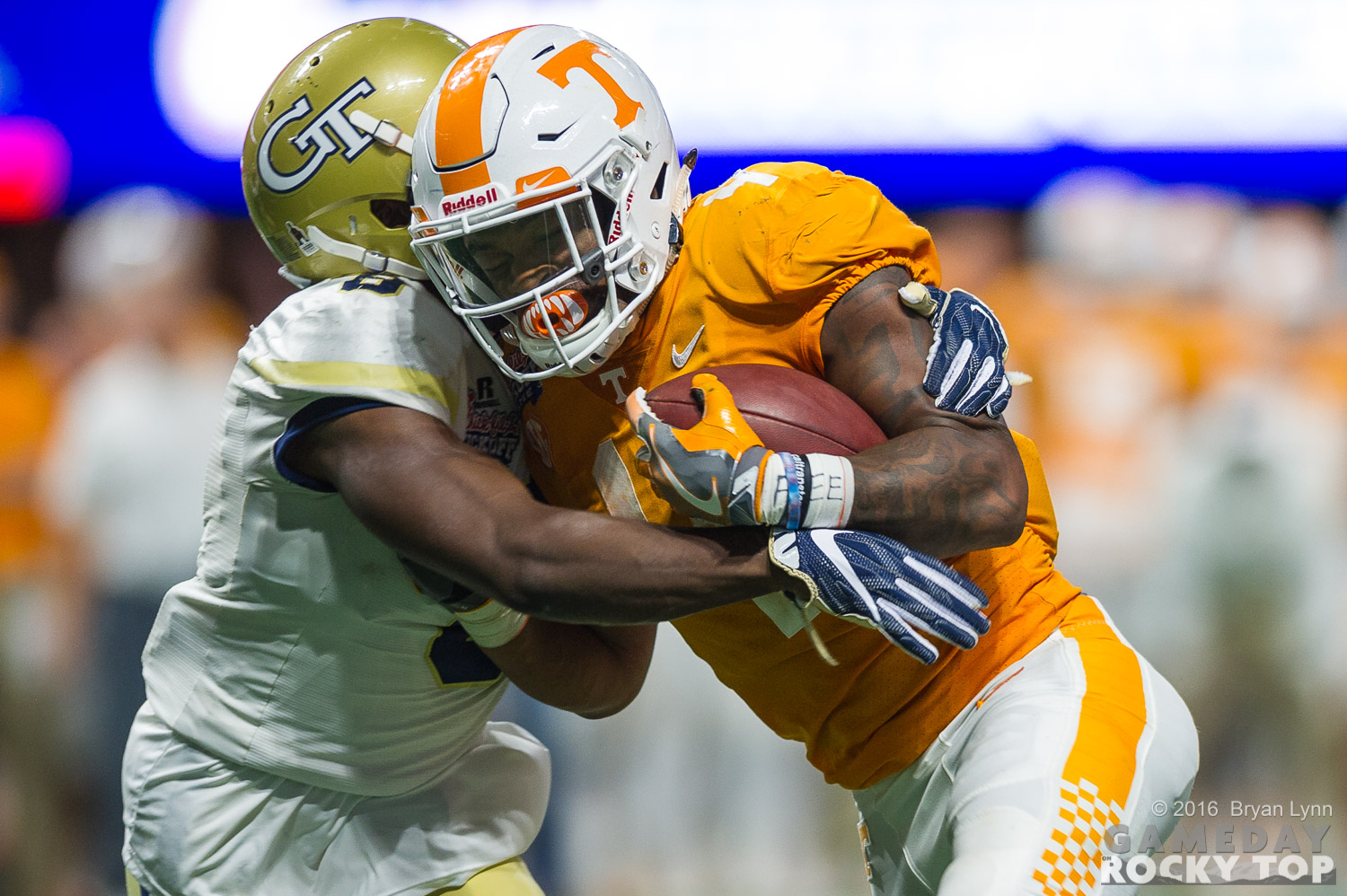The answers will really come next week. But after a week of triple option and a week of FCS, we can put a few questions aside on the road to Gainesville.
Quinten Dormady is Tennessee’s quarterback right now. Speculation that Jarrett Guarantano has a higher ceiling is based in recruiting rankings and…I’m not sure what else at this point. Dormady is 33-of-55 for 415 yards (7.5 yards per attempt) with four touchdowns and one poor decision on an interception today. Since halftime against Georgia Tech, Dormady is 25-of-35 (71.4%) for 363 yards (10.4 ypa).
Guarantano could’ve had more help from his receivers today, but was still 4-of-12 for 41 yards against an FCS opponent. There is a reason they didn’t play him on Monday, and I would not expect to see him in Gainesville. That’s no guarantee Dormady will be lights out against a tougher Gator defense, but he is the clear choice of this coaching staff at the moment. And what we’ve seen on the field backs that up.
Tennessee’s number two running back is up for grabs. Before today Carlin Fils-aime was best known for being part of an unfortunate fumble at South Carolina last year. I was worried, if Ty Chandler had clearly passed him by, that might be the strongest memory he got to make at Tennessee. But CFA took care of that himself today with 41 yards and two touchdowns on three carries.
In Butch Jones’ tenure the Vols have always had a clear one-two at running back (Neal/Lane, Hurd/Lane, Hurd/Kamara). John Kelly is clearly the alpha, but the beta is still up for grabs it would seem.
Dormady loves Brandon Johnson. With seven catches in two games, Johnson has been Tennessee’s most targeted wide receiver. John Kelly has more catches overall as the Vols continue to love to throw to the running back in this offense. And Marquez Callaway is clearly the big play threat. But Johnson might be emerging as the number two option at receiver in what is still a crowded field. Josh Palmer had some big chances today that Dormady overthrew, and Josh Smith was going to start originally but is yet to play. I think the Vols are better off if they get more consistency at the top, but there are some decent options here.
Efficiency competes for championships. The Vols had only one three-and-out today and put an 0-for-11 on Indiana State’s offense on third down. This offense isn’t putting up the numbers we saw in November last year, but that’s an unfair comparison considering the Vols led the nation in yards per play during that stretch last fall. What they have done is get off to a better start in the first two games than what we saw from Team 120 against Appalachian State, Virginia Tech, and Ohio. They avoid negative plays and, since halftime against Georgia Tech, give themselves good opportunities on third down. The defense can’t erase Yellow Jacket memories by beating Indiana State, but they did hold the Sycamores to 3.77 yards per play.
Tennessee now must maintain focus in what will be an emotional week. Where will this Florida game be played? Florida State and Miami have moved their showdown, but the Vols and Gators do not have a common bye week. If Gainesville isn’t an option, could the game be played in Atlanta? Would both teams consider moving it to Knoxville, then playing in Gainesville in both 2018 and 2019?
There will be plenty of rumors, and Florida’s decision makers didn’t endear themselves to the rest of the league over the LSU game last year. But the biggest concern this week is everyone’s safety and the livelihood of those in the Sunshine State; how much that is affected won’t begin to be known until a few days from now. Thoughts and prayers to those in the path of this storm; we’ll figure out football later. And no matter what the outcome, Tennessee is capable of taking care of its own business.

